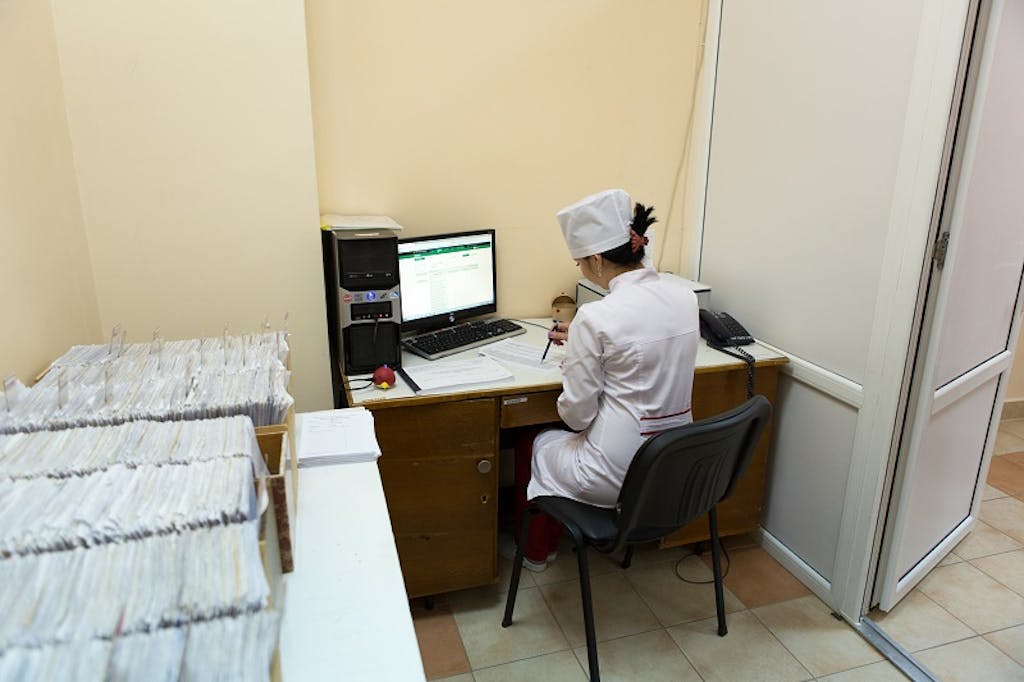Why Is Tb on the Rise Again in the Us
Tuberculosis is poised for a deadly global surge, every bit progress slips due to pandemic-induced disruptions. Urgent activeness and investment are needed to protect progress made and to meet the 2022 TB targets agreed to by Un Members States.
For the first fourth dimension in over a decade, deaths from tuberculosis have increased, making TB the world's second deadliest infectious killer after COVID-xix.
The 2022 Global Tuberculosis Report, recently released by the World Health System (WHO), cites ii underlying causes for the increment of TB deaths in 2020.
First, pandemic lockdown made it difficult for people to seek intendance, such every bit TB diagnosis and treatment. In total, fewer people were diagnosed and treated or provided with TB preventive handling in 2022 than in 2019.
Second, severe disruptions to TB services and supply bondage, coupled with a reduction in human, financial, and other resources that accept been reallocated from tackling TB to combating the COVID-nineteen response, accept express the availability of essential services. Spending on TB diagnostics, treatments, and prevention decreased globally 8.6%, to $5.3 billion in 2022 from $5.8 billion in 2019.
WHO estimates that upward to 4.1 1000000 people who have newly fallen ill with the illness have non been diagnosed with it or officially reported to national authorities, an increase from ii.ix million in 2019. As rates of delayed TB diagnosis and interruptions to TB treatment continue to reach all-fourth dimension highs, this shadow pandemic is poised for a deadly global surge in the next two years.
Before COVID-xix struck, TB was the leading cause of death from infectious diseases globally. In 2019, approximately 25% of the world's population had TB, and it claimed the lives of almost 4,000 people every day.
Simply progress was being fabricated.
The number of people existence treated for TB was on the rise — over xiv million people received intendance in 2022 and 2022 combined. And the number of people provided with preventive treatment for TB quadrupled, from i 1000000 in 2022 to over 4 million in 2019. In comparison, the WHO reported a 21% reduction in TB treatment in 2020, when COVID-xix was rampant, with only two.8 meg people accessing the treatment they needed.

The clock is ticking for governments to concur each other accountable and advance their collective deportment to mitigate the impacts of the COVID-xix pandemic on rising TB incidence and mortality.
Past 2050, multidrug-resistant TB — a form of TB that does non reply to known antibiotic treatments — alone is predicted to crusade 2.v million deaths, costing approximately $17 trillion if it is not adequately addressed and controlled in the adjacent few years. This is a human being and economic cost the world cannot withstand.
In 2022 world leaders came together at the High-Level Meeting (HLM) at the UN General Assembly to spur global commitments and actions to reduce the burden of TB on communities effectually the world. The resulting 2022 Global Targets for Tuberculosis represented the first time that UN Member States set and agreed upon specific global targets for funding TB prevention, treatment and care, and enquiry.
But at present, with the 2022 deadline fast budgeted, the world is falling further off rail. COVID-xix has placed enormous force per unit area on health systems around the world — from supply chain delays to overburdened health workers to limited access to diagnostic tools and treatments — which has underscored the need for increased investment.
Past investing in health system infrastructure, rebuilding the health intendance workforce, and ensuring health care providers have the resources they need to prevent and respond to the multiple global health threats of today, we tin non only spur progress toward the 2022 TB targets but nosotros also can actively forbid and limit the impact of hereafter epidemics.
We have seen what the toll of inaction and underinvestment tin can yield: a global pandemic that can upend economies and take millions of lives around the world. Health threats like TB cannot go on to exist ignored.
New tools for TB prevention, treatment, and care are urgently needed if the world hopes to get back on rail to run into TB targets. At the HLM on TB in 2018, leaders promised to spend $xv billion every year on TB prevention, diagnosis, treatment, and research. Less than one-half of that target has been met.
Subsequently the COVID-xix pandemic has been subsided, political leaders can demonstrate their commitment to improving global health security and ensuring global economic stability past rededicating themselves to stopping the spread of TB through:
- Expanding patient-centered care, active example detection, increased availability of rapid sensitivity tests and other diagnostic tools.
- Increasing bilateral and multilateral investments in the evolution of new TB diagnostics, treatments, and vaccines.
- Implementing national policies that preserve the rights of communities with heightened vulnerability to TB.
The by yr has been an alarming wake-up call for political leaders and policymakers around the world to reprioritize and strengthen global deportment to combat and prevent airborne respiratory diseases such as TB, SARS, and now COVID-19 — which can escalate from epidemics to global pandemics in a matter of weeks.
As countries become increasingly hyperfocused on accelerating the distribution of COVID-xix vaccines, we cannot afford to lose sight of the 2022 TB targets and to let the progress fabricated confronting this deadly respiratory disease slip away. The wellness and well-beingness of millions of people around the world are on the line.
Photo: Christine McNab/ Stop TB Partnership
Source: https://unfoundation.org/blog/post/urgent-action-needed-to-stem-the-growing-tide-of-tuberculosis/
0 Response to "Why Is Tb on the Rise Again in the Us"
Post a Comment